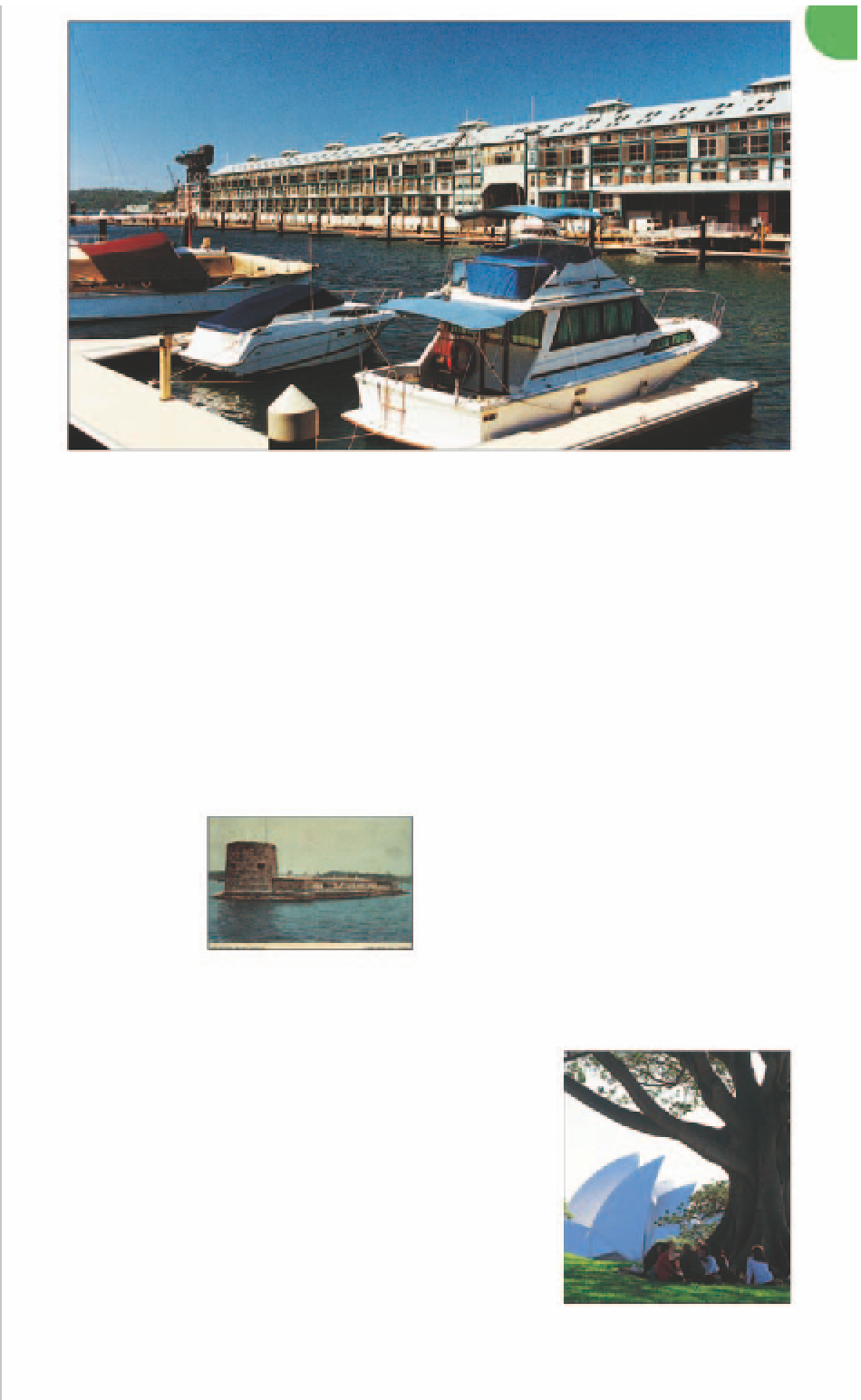Travel Reference
In-Depth Information
Historic Woolloomooloo Finger Wharf redevelopment, including apartments, restaurants and a hotel
Fort Denison
5
Sydney Harbour.
Map
2 E1.
Tel
9247
5033.
g
from Circular Quay.
¢
25
Dec.
&
6
-
8
$
cadman.
cottage@environment.nsw.gov.au
The Domain
8
Art Gallery Rd.
Map
1 C4.
@
Sydney Explorer, 111, 411.
6
7
Harbour, the Opera House
and Kirribilli. To explore Fort
Denison, book a boat tour
from Cadman Cottage.
Woolloomooloo
Finger Wharf
6
Cowper Wharf Roadway,
Woolloomooloo.
Map
2 E4.
@
Sydney Explorer, 311.
6
People who swarm to the
January concerts and other
Festival of Sydney events in
The Domain
(see p49)
are part
of a long-standing tradition.
This extensive public space
has long been a rallying point
for crowds of Sydneysiders
whenever emotive issues of
public importance have arisen,
such as the attempt in 1916 to
introduce military conscription
or the dismissal of the elected
federal government by the then
governor-general in 1975.
From the 1890s, part of The
Domain was also used as the
Sydney version of “Speakers'
Corner”. Today, you are more
likely to see joggers or office
workers playing touch foot-
ball in their lunch hours, or
simply enjoying the shade.
First named Rock Island, this
prominent, rocky outcrop in
Sydney Harbour was very
quickly dubbed “Pinchgut”.
This was probably because of
the meagre rations given to
convicts who were confined
there as punishment. It had a
grim history of incarceration
in the early
years of the
colony.
In 1796, con-
victed murderer
Francis Morgan
was hanged on
the island in
chains. His
body was left to
rot on the gallows for three
years as a grisly warning to the
other convicts.
Between 1855 and 1857, the
Martello tower (the only one
in Australia), gun battery and
barracks that now occupy the
island were built as part of
Sydney's defences and the site
was renamed after the gover-
nor of the time. The gun, still
fired at 1pm each day, was an
important aid for navigation,
allowing mariners to set their
ships' chronometers.
Today the island is a popu-
lar tourist spot, commanding
spectacular views of Sydney
This is the largest of several
finger wharves that jut out
into the harbour. The wharf,
completed in
1914, was one
of the points of
embarkation for
soldiers bound
for both world
wars. Following
World War II, it
was a landing
place for many of
the thousands of immigrants
who came to Australia.
The wharf was the subject of
public controversy in the late
1980s and early 1990s, when
demolition plans were thwart-
ed by conservation groups.
Since then, this National-Trust-
listed maritime site has been
redeveloped to include a
hotel, lively restaurants and
bars, and apartments.
Fort Denison in 1907
Art Gallery of New
South Wales
7
See pp108-11.
A dramatic view of Sydney Opera
House from Mrs Macquaries Chair






































